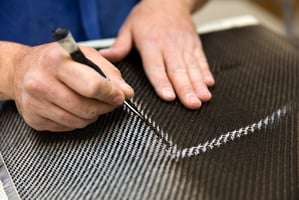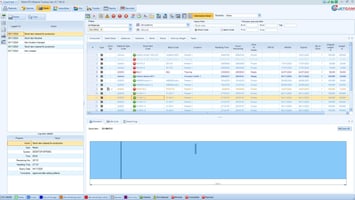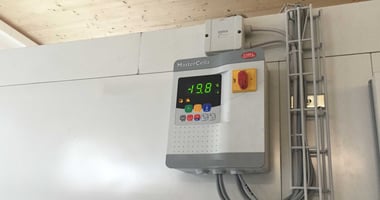A Challenge in Location, Life, and Consumption Tracking Pre-preg composite materials offer...
The challenge of defect management and nesting around defects.
Defects in pre-preg composite material are commonplace, yet many manufacturers waste significant amounts of material due to the complexity in elegantly handling this. Here, we explore the problems with defects, along with ways to track them and better utilise your material during the nesting process.

What are defects and why do they matter?
Defects can occur at any stage of the composite manufacturing process. Material often arrives from the material manufacturer with defects, such as inconsistent thickness, pores, and wrinkles in the fibre. Other defects can appear during layup and/or bagging procedures, tooling, etc, and even non-uniform hardening agents leading to over-cured or under-cured material after the autoclave process.
The severity of a defect will depend on how it affects the overall structure of the part, and this can be exacerbated by the orientation and location.
Solving the problems with defect management
There are several issues at multiple stages of manufacturing that need to be tackled if you wish to be able to minimise the impact of defects.
Defect identification and logging
First, you need to know exactly where defects are on the material upon receipt. Most manufacturers cannot supply this information electronically. For those that can, JETCAM’s CrossTrack composite manufacturing software can import new stock with defects automatically marked. These could be defects that are across the entire width of the roll or rectangular defects, allowing you to save more material.
Within CrossTrack’s stock screen, any roll with a defect will be highlighted as such, with the material allocation display also showing the location of the defects. Users can also drag and drop any documentation relating to defects and link it to the material stock item. This ensures that all staff have access to any additional details about the type of defect on the roll. You can also use CrossTrack's 'custom data' functionality to store additional information about any defects, such as the type of defect (e.g. wrinkle, FOD, etc.) and whether it's a cosmetic defect or structural defect.

Any number of defects can be logged, either manually, through CSV import or web services.
Nesting around defects
The next issue is how you handle the defects. Many companies will simply cut the entire width of the roll, removing the defect entirely. Not only do you waste the material above and below the defect, but you also cannot create a larger, denser nest, as you now have two separate rolls of material.
CrossTrack automatically allocates material stock, based on its life expiry. Companies performing ‘Just In Time’ nesting no longer need to consider defects when allocating stock, as JETCAM Expert’s nesting engine can automatically nest around them.

Example showing two defects, with plies nested around them.
Accurately cutting around defects
The final issue is more 'physical'. If you have a 100m roll of material with a defect at 75m, are you confident that if 6 nests have already been cut the amount of material logged matches reality? If not, you may have the defect marked in the wrong location. This not only wastes expensive composite material but means you may also have a ply with a defect.
CrossTrack allows material stock to be marked as ‘pre-released’, acting as a flag to staff to re-measure and validate the location of the defect. If it’s no longer where it was originally mapped to, the location can be updated in CrossTrack and the nest recreated in a matter of minutes.
Summary
Defects are a way of life in the composite world, but they needn’t be a costly problem. With the right discipline, defects can be logged at goods in, visible to all staff. Nests can also be quickly reworked to ensure that you make the most of your material.
%20(Custom).jpg?width=1000&height=252&name=JETCAM%20logo%20(glossy%20effect)%20(Custom).jpg)


